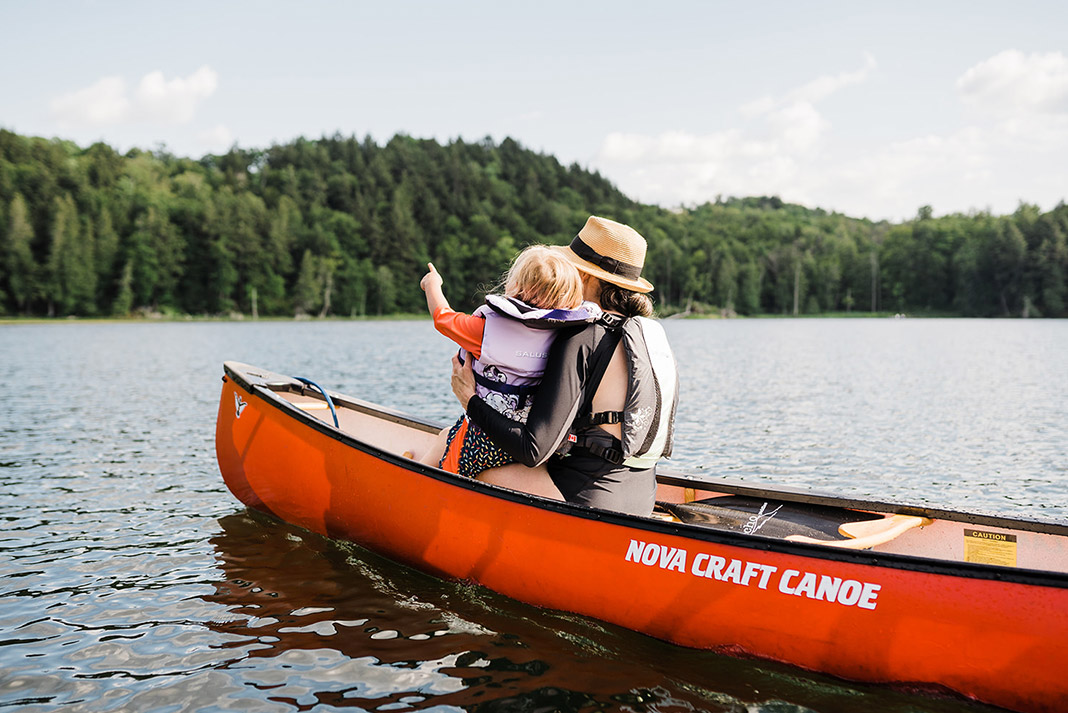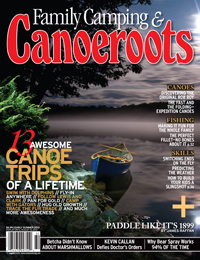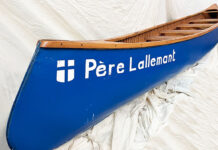There’s a temptation to think that we somehow got from the era of explorers and voyageurs to modern canoeing with very little activity in between.
In truth, there was at least a century of prospectors, surveyors, clergy and gentleman and lady adventurers who pioneered routes and left cairns and journals that beguiled hardcore canoe trippers then and now. Names like Low, Bell Selwyn, Macoun, McConnell, Richardson, Dawson and Keele are still very much a part of the ongoing conversation about canoe tripping.
Kinship in an unbounded land
That conversation continued at this year’s Wilderness Canoe Symposium. One of the voices buried in the Saturday afternoon program was Fred “Skip” Pessl who stood up and said, “I’ve been on one canoe trip in my life. And it didn’t end well.”
And with that, he shared a memoir of his 1955 trip down the Dubawnt River with Arthur Moffatt. Along with four other college students, they followed routes pioneered in the 1890s by Geological Survey prospector Joseph Burr Tyrrell.
The leader of Pessl’s trip, 32-year-old Arthur Moffatt, died on that trip.

After publication of Moffatt’s journal and the macabre story in Sports Illustrated in 1959, the only public airing of the trip was a compelling and controversial 1996 book called Death on the Barrens: A True Story of Courage and Tragedy in the Canadian Arctic by Pessl’s trip mate and fellow survivor, George Grinnell.
Seventeen years after the publication of Grinnell’s account and 58 years after the actual journey, Pessl told the symposium audience that he is determined to augment Grinnell’s account with his own version of the story.
On his journey, J.B. Tyrrell built a cairn in the headwaters of the Dubawnt, leaving a note in a jar and a flag to mark the spot. From that time on, trips that followed would stop and add their notes to the jar—including the 1955 Moffatt trip—leaving a multi-layered experiential record of the echoes of history in a very particular wilderness location.
On Tyrrell’s trail this past summer, Manitoba paddler Brian Johnston stopped at the cairn. The jar and notes had suffered. Some—including Tyrrell’s original from 1893 and Moffatt’s from 1955—were illegible in visible light. Others detail the on-the-spot musings of parades of paddlers, also inspired by the original expedition from the Geological Survey. Johnston scanned the notes, refilled the jar with facsimiles and archived the originals.
What binds J.B. Tyrrell’s original 1890s report, George Grinnell’s haunting Death on the Barrens, Skip Pessl’s memoir and Johnston’s forthcoming On Top of a Boulder: Notes from Tyrrell’s Cairn, is the canoe and what Johnston refers to as “kinship in an unbounded land.” Without the prospectors, this kinship would not exist—there would be no jar filled with inspired notes tucked away inside a cairn built 120 years ago.
Lost messages in a bottle. | Feature photo: Brian Johnston




 This article was first published in the Early Summer 2013 issue of Canoeroots Magazine.
This article was first published in the Early Summer 2013 issue of Canoeroots Magazine. 





